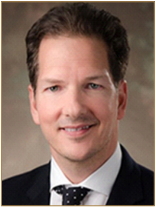Commentary on Vertebral Body Sliding Osteotomy for Cervical Myelopathy With Rigid Kyphosis: A Technical Note
Article information

We read with great interest the technical note on vertebral body sliding osteotomy (VBSO) [1]. This is a valuable alternative to the anterior cervical corpectomy and fusion (ACCF) for patients with cervical myelopathy and kyphosis, particularly in the setting of ossification of the posterior longitudinal ligament (OPLL). The VBSO involves a discectomy and uncinectomy at the upper- and lower-most levels, followed by vertically oriented osteotomies along the lateral vertebral bodies to release the desired levels. This allows the vertebral body and associated posterior longitudinal ligament to be mobilized as a floating segment and pulled anteriorly to decompress the spinal cord. Lordotic grafts, combined with anterior plating, allow for correction of associated kyphosis. In the authors’ experience, this approach is associated with lower risks of durotomy and implant failure compared to ACCF.
We congratulate the authors on this novel technique that has an important role in the treatment of OPLL. Additional prospective data are needed to assess the safety of this procedure compared to ACCF. VBSO seems particularly suited for case of localized OPLL since it minimizes the risk of durotomy or neurologic injury associated with resection of ossified ligament, however multilevel anterior cervical discecomy and fusion is still an effective treatment for patients with kyphosis and myelopathy without OPLL. The VBSO is also technically more demanding and requires special care when translating the mobile segments anteriorly. In the authors’ experience, VBSO is associated with lower rate of subsidence and pseudarthrosis compared to ACCF, which they attribute to additional fixation points in the floating segments and avoidance of a corpectomy cage or graft. Despite compelling biomechanical rationale, additional data are needed to confirm this hypothesis. The role of posterior fixation in the setting of VBSO also requires validation. In our experience, ACCF of 3 or more levels requires posterior supplementation and we assume this would be true of VBSO involving 3 or more levels, however additional studies are warranted. Once again, we congratulate the authors on this study and recognize the significant role of this technique in the treatment of cervical myelopathy and kyphosis, particularly in cases of localized OPLL.
